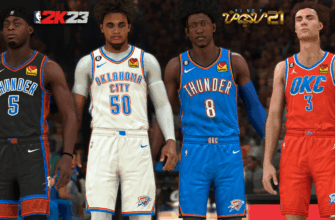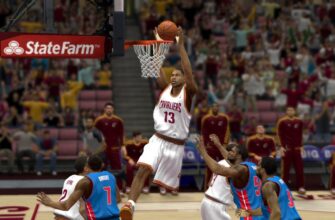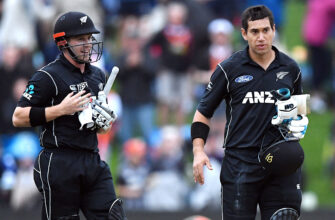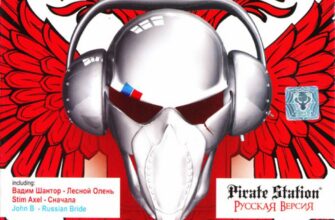For over three decades, the EA Sports NHL franchise has been a cornerstone of virtual ice hockey, evolving from pixelated puck drops on the Sega Genesis to high-definition clashes on PlayStation 5 and Xbox Series X. Each new installment arrives with the promise of enhanced realism and deeper immersion, striving to capture the raw energy and strategic depth of the fastest game on ice. NHL 26 is no exception, bringing with it a suite of technical upgrades and refined gameplay mechanics that aim to keep the series at the forefront of sports simulation, all while navigating the delicate balance between innovation and player expectation.
The Engine Room: ICE-Q 2.0 and the Quest for Realism
At the heart of NHL 26’s ambitious pursuit of authenticity lies ICE-Q 2.0, a new gameplay intelligence system powered by real-world NHL EDGE statistics. This isn`t just a fancy name; it`s the underlying framework designed to breathe more life into every stride, pass, and check. The developers` goal is clear: to enhance player movement and responsiveness, making on-ice action feel less like pre-programmed animations and more like the spontaneous chaos of a live hockey game.
In theory, ICE-Q 2.0 promises a more “authentic hockey experience.” It’s an ongoing challenge for any sports simulation to replicate the fluidity and unpredictability of elite athletes. While the impact of such systems can sometimes be subtle, a truly effective intelligence layer can transform the feel of the game, pushing it closer to the raw, visceral experience fans crave.
A Tkachuk Trio on the Cover: The deluxe edition of NHL 26 prominently features a family affair, with Florida Panthers forward Matthew Tkachuk, Ottawa Senators winger Brady Tkachuk, and former St. Louis Blues star Keith Tkachuk gracing the cover. The standard edition, however, keeps the spotlight solely on Matthew Tkachuk – perhaps a nod to the current generation`s dominance, or simply a strategic decision to avoid overcrowding the digital ice.
The Last Line of Defense: Revolutionizing Goaltending
Perhaps the most impactful refinement in NHL 26 comes in the form of drastically improved goaltending mechanics. For years, virtual netminders have been a source of both awe and frustration – capable of impossible saves one moment, only to let in a soft goal the next. NHL 26 tackles this head-on with “Goalie Crease Control,” an overhaul that makes goalies “smarter, more aware, and more reactive than they`ve ever been before,” as emphasized by creative director Mike Englehart.
This isn`t just about making them harder to score on; it`s about making their movements and decisions more human. Key enhancements include:
- Save Wall Technology: Enabling goalies to block shots in seemingly impossible, yet physically plausible, ways.
- Enhanced Situational Awareness: Goaltenders are programmed to poke check more frequently and guard their posts with greater effectiveness, actively challenging attackers.
- Dynamic Reactions: An impressive addition of 81 new goaltender animations, including secondary animations for deflected shots, ensures split-second reflexes look and feel authentic. Even their emotional responses are more varied; a goalie might display visible dejection after surrendering a bad goal, mirroring the mental game of real-world netminders.
The goal is to move beyond mere save percentages and create a tangible sense of a goalie actively influencing the game, reacting dynamically to the play unfolding around them. It`s a welcome breath of fresh air, making the goaltending battle a more nuanced and engaging part of the experience.
From Pond to Pro: The Evolved `Be a Pro` Mode
Career modes are the beating heart of modern sports video games, and NHL 26`s `Be a Pro` mode continues to be a standout. It offers an immersive journey for aspiring virtual hockey legends, allowing players to craft their own avatar and guide them from their nascent junior years all the way to NHL stardom. The days of being arbitrarily thrust into pond hockey are over; instead, your journey begins with a choice of WHL, OHL, or QMJHL team, immediately grounding your career in a realistic developmental path.
The progression feels organic:
- You`ll compete in the IIHF U20 World Junior tournament, an early proving ground.
- Pre-draft interviews require thoughtful responses, as your answers genuinely influence your draft stock.
- The preseason is a critical testing ground, where hitting specific milestones determines whether you make the NHL roster or begin your professional career in the American Hockey League (AHL).
Crucially, `Be a Pro` isn`t just about on-ice performance. Realistic interactions with coaches, general managers, and even current NHL players provide valuable feedback and shape your character`s reputation and trajectory. It’s a compelling narrative, reinforcing why this mode remains a “cream of the crop” experience for many players.
The Phantom Judge: Unpacking the `Form Score` Fiasco
Despite these significant strides forward, no virtual arena is without its rough ice. NHL 26 introduces a concept called `Form Score,` intended to reflect a player`s on-ice performance and impact their ice time, reputation, and coach`s trust. In theory, it’s a brilliant idea – a metric to reinforce realistic hockey dynamics, where consistent play matters. In practice, however, its implementation can be… perplexing.
The Form Score often feels like a phantom judge, handing out dubious penalties for actions that, to a human eye, seem perfectly reasonable. Imagine a powerful winger driving to the net, unleashing a shot that narrowly misses the top corner, only to be chastised for a “badly aimed shot.” Or a forward diligently backchecking, but still dinged for a defensive lapse when a teammate`s turnover far up the ice leads to an opposing rush. These aren`t isolated incidents; they`re frequent, minor injustices that chip away at the immersion.
It`s almost as if the game`s internal algorithms occasionally decide to interpret “effective play” through a lens unique to itself, detached from the nuances of human intent or the chaotic flow of real hockey. While the concept is fundamentally sound, its execution sometimes leaves players scratching their heads, wondering if the virtual coach needs to invest in new glasses.
In a game striving for realism, such inconsistencies can be frustrating, reminding us that even the most advanced AI still has a learning curve when it comes to understanding the beautiful imperfections of hockey.
The Final Buzzer: An Enjoyable, Evolving Experience
NHL 26, much like its predecessors, stands as a testament to the enduring appeal of virtual hockey. With ICE-Q 2.0 providing a more responsive foundation, and genuinely transformative improvements to goaltending and the beloved `Be a Pro` mode, the game delivers an experience that is both familiar and refreshingly evolved. It’s a compelling package that brings fans closer to the action, allowing them to live out their hockey fantasies with unprecedented fidelity.
While the occasional head-scratching moments with the Form Score prevent it from being a flawless triumph, they are minor blemishes on an otherwise robust and enjoyable title. NHL 26 ultimately reaffirms the franchise`s position as the go-to destination for hockey enthusiasts, proving that even after three decades, there`s always new ice to break and new ways to experience the game we love.







